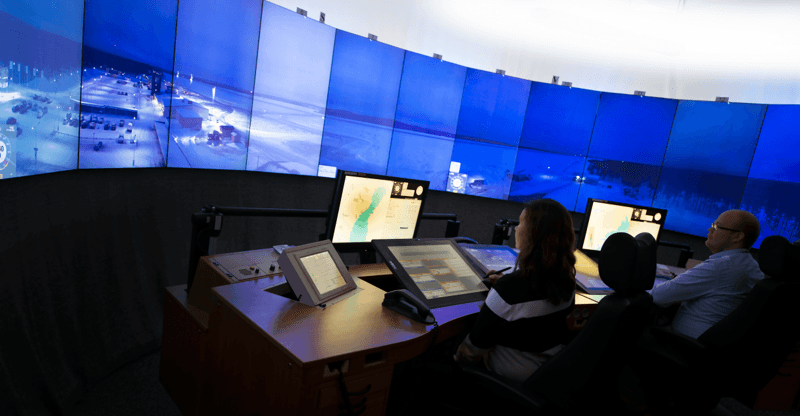
THE CNS/ATM INDUSTRY: GOING DIGITAL

The unprecedented explosion of the digital age and the frenzied digitalisation, automation, virtualisation, and interoperability of all the spheres of the aviation industry are creating novel and highly innovative opportunities for virtually all the operational realms of the global aviation industry, particularly critical air navigation service (ANS) sectors whose appetite for technological innovations, in recent times, has assumed an uncommon dimension. From increasingly versatile automated air traffic services message handling systems, smart flight plan display systems, digital VoIP radios and cutting-edge digital remote tower technologies to modularised digital aviation information broadcast solutions, the emerging L-band digital aeronautical datalink communication system (LDACS) and state-of-the-art software and hardware for advancing the capability of drones for flight calibration as well as for aircraft and airport inspection use cases, both existing and emerging technological innovations continue to present a wide array of new opportunities for addressing growing industry demands for robust data integration platforms and innovative ANS/ATM systems for driving the continuing safety, efficiency, and environmental sustainability of the global air navigation system.
This scenario clearly underlines the relevance of the theme, “Digital Transformation in CNS/ATM: Strengthening ATSEP Competencies for a Safer and Sustainable Future”, adopted by the IFATSEA (International Federation of Air Traffic Safety Electronics Associations) Africa Regional Office and the Uganda Air Transport Safety Engineering Association (UGATSEA) for the 15th Africa Region Meeting (ARM) scheduled to hold in Kampala, Uganda from 17 to 20 June, 2025. Although targeting just the implication of the digitalisation of the CNS/ATM (communication, navigation, and surveillance/air traffic management) space on the competency aspect of air traffic safety electronics personnel (ATSEP), the theme, nevertheless, calls attention to the potentially diverse ramifications of CNS/ATM digitalisation.
To be sure, the increasing digitalisation, virtualisation and automation of the air navigation services provision realms can impact the ANS industry in a wide variety of ways. There is the question surrounding the need to upgrade and transition from legacy systems to modern digital technology-driven terrains in a seamless manner. This transition expectedly occasions concerns surrounding systems and protocol compatibilities as well as the feasibility of interoperability and data integration. Another defining attribute of aviation system digitalisation, virtualisation and automation are concerns revolving around the susceptibility of the industry to ‘digital attacks’ within the global cyberspace coupled with worries linked to the prospect of a wholesale adoption of AI (artificial intelligence) technologies and techniques.
Now, coming to the focal point of the 15th ARM’s theme in relation to the digitalisation of the CNS/ATM operational space, the increasing adoption of digital technologies in the air traffic safety electronics personnel (ATSEP) working environments definitely directs attention to issues surrounding ATSEP training and competency. In this vein, the significance of the adoption of competency elements and competency units that take due cognizance of an in-depth understanding of the nuances of digitalisation cannot possibly be overemphasized. Allied with this need is the importance of a clear understanding of the nuances and affordances of automation and virtualisation, with an unalloyed appreciation of the levels of automation appropriate for operational efficiency and safety in the context of the CNS/ATM techno-operational space.
This argument in no small measure underscores the need to take a second look at ICAO Doc 10057 (Manual of Air Traffic Safety Electronics Personnel Competency-based Training and Assessment) with a view to aligning its content with contemporary and emerging realities within the air traffic safety engineering operational milieu. The emphasis here is on the overarching need to incorporate vital competencies relating to cybersecurity and emerging ATM virtualisation, spiced with drills and cognitive elements focused on sharpening the understanding of ATSEP regarding the nuances and affordances of automated air navigation systems.
The importance of the role of the International Federation of Air Traffic Safety Electronics Associations (IFATSEA) in ensuring this much needed rejigging of Doc 10057 cannot be possibly overstated. To be fair, the Federation has been making remarkable interventions not only with respect to the aspects in question but also in relation to other subject matters including the operational safety of ATSEP and the need for the global standardization of ATSEP certification.
With so much on the horizon regarding the future of CNS/ATM practices, now, perhaps, is the appropriate time for stakeholders in the CNS/ATM techno-operational space all over the world to start thinking seriously about the systems and personnel components of CNS/ATM vis-à-vis the role they play in promoting the continuing safety, security, efficiency, and sustainable development of aviation in the context of a digital-centric aviation system. ◙
All rights reserved. No part of this material or the content of this website may be reproduced or published in any form or by any means without the prior written permission of the publisher.
Contact: atsei@dextermarie.com


